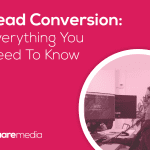
A Comprehensive Guide To Market Research
Market research plays a huge part in many businesses, but it can be a little overwhelming if you are unsure what to do or even how to start it. It is important to get an understanding of your target audience and competitors in order to discover what your audience wants, how they want it, what your competitors are doing and if your competitors are meeting their needs. This can help you to fulfil your customers’ needs and remain competitive. We’ve put together a comprehensive guide to help you successfully carry out market research and ultimately reach your business goals.
What Is Market Research?
Market research is when you gather information about the target market or audience for your product or service. It covers many different elements such as buying habits, income, and other things that can affect whether a customer will buy your product.
Some of the things this may include, are:
Demographics:
- Age
- Gender
- Location
Buying habits:
- What does the customer buy?
- Where do they buy the product?
- How often they do buy it?
Income:
- Do they have disposable income?
- How much disposable income do they have?
Economics:
- Where is the item produced?
- How is it distributed?
- Where is it sold?
- How is it purchased?
Competition:
- Who are your competitors?
- Why are they your competitors?
- What do you do differently to them?
Why Should I Use Market Research?
Using market research can help you to gain insights into:
- how to improve your products
- what your competitors are doing
- what people like about your competitors and their products
- what people like in your product
- how to gain more market share
- how to constantly adapt and improve your product
- what your target audience wants compared to what you have given them
Market research is essential to every business because it can help predict how well your product or service will perform in the market or any amends you need to make, increasing your sales in the long run. It can also improve customer retention and happiness as customers know you will listen to them, which will lead to more purchases.
The research you have carried out will help you identify new needs and wants in your market, giving you a bigger target audience. It also allows you to identify any new customers you could target with your product, leading to a potential increase in revenue.
It also helps you get to know your existing customers and what problems they may be facing that your product could be the solution to. It can also identify problems with your product or service and allows you to either amend your product to include this solution or introduce another product that solves this.
The research will help you to set realistic targets based on your findings. You need to be honest with your aims and objectives, otherwise, you won’t meet them, and it could be overwhelming and demoralising for you and your team.
If you have some issues within your business, such as sales not performing the way you thought they would, conducting market research may give you an insight into why your sales are not reaching the targets and what you can do to reach these sales.
Not only can market research help expand your customer base, but it can also help with identifying new opportunities. Through the research you have carried out, you might find another gap in the market that you can fill.
When armed with this knowledge, you will be able to make better decisions about improving your products or services and grow your business to its full potential. But in order to do this, you need to understand the different types of market research and how to conduct them successfully.
Different Types of Market Research
The research you carry out will be either primary or secondary research. If you start by clarifying what information you need, you will then be able to decide which of these research methods is best for your situation.
Primary Research
Primary research is research you have carried out yourself – research you have taken the time and effort to plan and conduct. With this research type, you gather your own data, instead of using data that already exists. You can therefore tailor primary research to your business needs and ensure it is completely relevant. Primary research includes interviews, surveys, observations, and focus groups.
Secondary Research
Secondary research is when you use existing data to improve your product or marketing. Secondary research may not provide all of the information you need, or some information may be irrelevant, as you didn’t set the questions that resulted in the data. Secondary research can save you a lot of time and money as someone else will have already conducted the research and gathered the data you are using. Secondary research may come from newspapers, journals or blog posts, to name a few.
As well as research being primary or secondary, there are many different types of market research that you can carry out, such as surveys, focus groups, interviews, questionnaires, observations and monitoring.
Surveys
Surveys are a cheap, accurate, and easily accessible way to answer questions about your audience and product or service. You’re also more likely to get a faster response from your audience when they can fill out short surveys in their own time, rather than sitting in focus groups.
Before starting a survey, you need to identify your goals, aims and objectives. You need to know what questions you want to ask and whom you want to ask. Then you’ll need to design your survey and test it before sending a sample to a few people to see the response. After you’ve done this, you’ll be able to send it to your complete list of recipients.
In order to gain valuable insights, it’s a good idea to ask open-ended questions. These are questions that people can’t simply say yes or no to, but require a longer response and reasoning. For example:
- Why do they like your product?
- What attracts them to your product?
- Are there any features they dislike, and why?
There are different platforms available for creating online surveys, such as SurveyMonkey, Google Forms, and Microsoft Forms to name a few. Alternatively, you could issue paper surveys for people to fill in if you have field staff, or telephone surveys if you have phone operatives, where you phone someone and ask them to carry out the survey, then proceed to ask the questions over the phone.
To illustrate the effectiveness of surveys, did you know 75% of people will likely share their feedback when taking a customer feedback survey after a purchase? Only 50% of people would share feedback with the company by contacting them on social media. 85% of people say it is essential to share your feedback with the company after you’ve bought a product, according to SurveyMonkey.
Focus Groups
Focus groups are groups of people who give honest answers to your questions, often face to face, and they’re easy to conduct. You’ll get responses to your questions, but you can also see expressions and body language, which can provide you with extra information. In fact, it is a widely-held belief that up to 93% of communication is nonverbal.
You need to choose the topic and theme for your focus group, then you need to decide who you want to be involved in it and what questions you want to ask them. After you’ve decided on the questions and members, you need to decide who’s asking the questions. It’s better to have more than one person asking questions and taking note of the responses, to ensure you can adequately record and evaluate everyone’s replies.
Interviews
An interview is a set of questions asked face to face to gain the answers you need regarding your product or service. Often, the questions asked in interviews are typically closed-ended.
You need to decide the questions you want to ask the interviewees and keep these the same for all participants so you can see trends within the answers. Some examples of questions you might ask are:
- Do you like the packaging?
- Did you like the features?
- Would you add any features?
- How does this compare to similar products?
- How is this priced to similar products?
Once you’ve compiled the questions, you’ll be able to decide who the interviews should be with. It’s best to do as many as realistically possible within your timescale, to gather as much valuable data as you can.
Questionnaires
Questionnaires are a quick way to get data from a particular group or a large number of people. They’re cheap, fast, and ordinarily effective in getting results. Questionnaires are like surveys, but they aren’t normally used for analysing statistics and surveys are the method for data collection and analysis.
To carry out a questionnaire, you need to know who you are aiming these questions at. Once you know who you are seeking these answers from, you can start to create closed and open-ended questions to get the best results. After you have finalised the questions, you can begin collecting results. This can be done through email or face to face.
Observations and monitoring
Observations and monitoring involve collecting data on people while they carry out a particular activity. Whether shopping in your store or using a product or your website, you will be able to gather data from how they act, when they speak, what they say, and any actions they take.
You can also observe through Google Analytics and any other platform that monitors the performance of a product. Google Analytics can tell you many different things about how people act on your website, such as:
- How many people go to your website
- How many people go to your product page
- How many people go to your checkout page
- How long people stay on your website for
- The bounce rates
- The conversion rates
The people taking part must legally be made aware they are being monitored.
You need to analyse the notes you took and turn the notes into data for you and others to work with. This will be successful if you have valuable data in your findings. For example, if your product is in a store and people walk past your product without looking at it, you know you need to move your product or make the packaging more eye-catching.
Conducting a SWOT Analysis
A SWOT analysis is very helpful when looking at market research. SWOT stands for strengths, weaknesses, opportunities, and threats, and these help you to identify areas that your product or marketing is performing well in and areas where it could be improved.
Strengths
Your market research may have indicated to you that your product or service is very popular among your target audience, which would fall under a strength as it shows there is demand for your product in the market, you’re looking at entering.
Weaknesses
Your market research may have also indicated that your product may have features that your target market isn’t interested in. This falls under weaknesses in the SWOT analysis as it shows that your product is too complex for your target market.
Opportunities
Your market research may suggest that your product would perform better in a different market, or with additional features to your product that your target market would like. This is an opportunity as it gives you time to work on the features or move market before you have rolled out the product.
Threats
The research conducted may have also given you an insight into the fact that there may be many similar products available, which would mean you’re entering a saturated market. This is a chance for you to evaluate your strengths and use them as a USP (unique selling point) to gain interest.
Conducting Market Research
Once you understand how and why you may want to conduct market research and the different types, you can begin putting your plan into action. You can do this by defining your audience personas, preparing your questions, becoming familiar with your competitors, and finally, analysing your findings once your research is complete.
Define your persona
Before you think about what market research you want to carry out, whether it’s primary or secondary research, you need to think about who your customers are. Who is your ideal customer? You need to think about their age, gender, location, job title, family size, income, and any challenges they may face. This is your opportunity to learn about your audience, and you may conclude your business fits multiple audience personas. Once you know who your audience persona is, you can think about how best you can engage with them. Do they use social media? Do they use public transport? Do they walk past billboards? This way, you will know the best areas to focus your marketing on when the time is right.
Prepare questions
You want to get the most out of your research, so prepare your questions beforehand. Think about how valuable the information is that you will gain from asking the question. It is particularly valuable to gain explanations about why your target market thinks the way they do, so aim to ask open-ended questions. You want to get to know the people answering your questions, so ask questions that will help you to understand them a little bit better. You then need to think about the challenges they may be facing. Do they know they’re facing challenges? You also need to understand how familiar they are with similar products on the market. After you’ve asked about the challenges, you need to understand how they responded to those challenges. What did they do? What did they search on Google? Did they find a solution they were happy with? You also need to find information on their final decision. Who was involved? What influenced their decision? What was the experience like? What would they do differently?
Know your competitors
After you’ve prepared your questions and you know what you want to ask, you need to know your competitors. Who are they? What research do they do and could you use this to your advantage as secondary research? How is your business different from your competitors, and how could you market your business in comparison by promoting your USPs? How could you improve your research or marketing?
Analyse your findings
You then need to analyse your results. What did you find? We recommend putting it into a SWOT analysis. What are the strengths you found? What are the weaknesses? Are there any opportunities for you to improve your product? Are there more benefits your target audience wants from your product or service? Are there competitively priced competitors? Is the market saturated? You could also use Google Analytics to find out how many people are going to your website and where are they coming from.
You always need to keep your goals in mind when analysing your findings. What did you learn? How is it useful to you? Then you need to put an action plan together, with all your findings, showing how will you be able to improve your product or service with the information you’ve found out. Market research will not have much value for you if you don’t effectively analyse your findings and take practical steps to act upon them.
Market research can be hard to understand and overwhelming if you are unsure how to conduct it and what to do with the results. We’ve taken you through every step of the way to help you understand market research better and reach your business goals through improving your products and services. Are you still struggling with market research? Get in touch with our Sales and Marketing Director, Steve Rees, today on s.rees@qoobgroup.co.uk or 03303 801 651.

